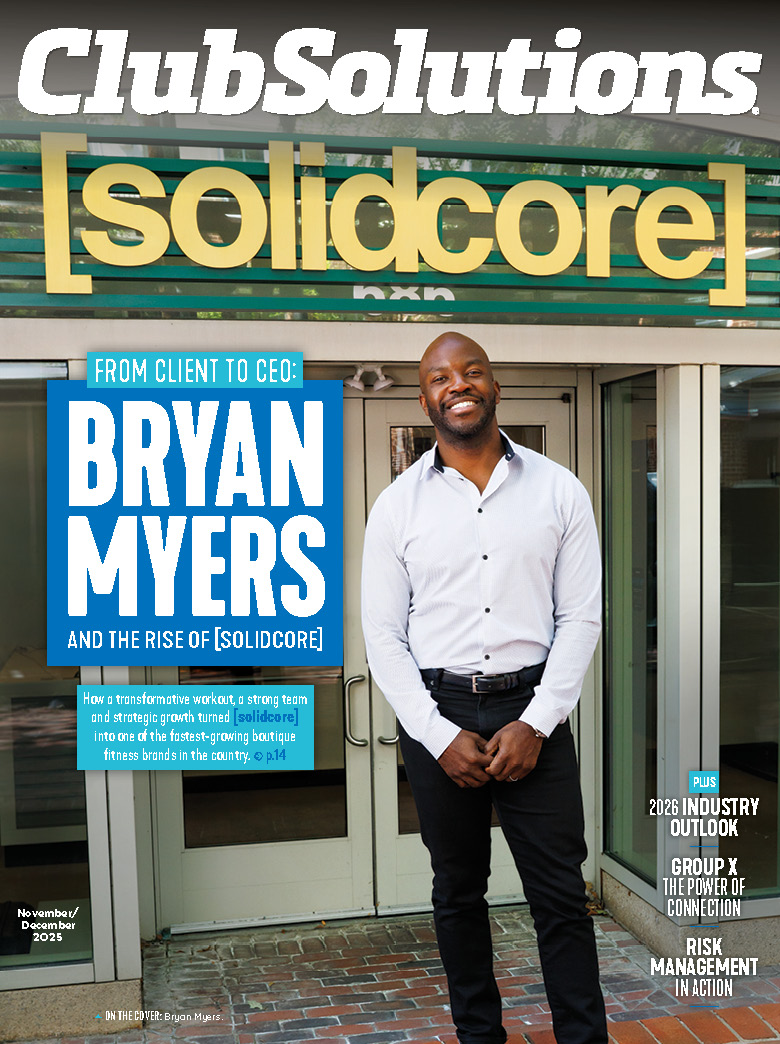Here are the strategies and tactics two health clubs are using for successful sales and marketing in the moment, post-COVID.
There are dozens of sales and marketing strategies club operators can choose to implement. Should you focus on print or digital, create an integrated marketing campaign, emphasize word of mouth marketing, or all of the above?
Much of what you do will depend on your local demographic and individual business goals. However, understanding the latest trends in sales and marketing, and where other clubs are finding success, can help you decide on your area of focus.
Marketing in the Moment
Grace Koval is the director of marketing and communications at Mountainside Fitness, which has 18 locations in Arizona. One area they are increasingly focusing on when it comes to marketing is digital.
“Digital spending is up and not only because of its growing popularity and offerings, but because you are able to update your message and ads on a dime,” explained Koval. “The other benefit to digital advertising is consumers are actively engaged when they are browsing social media. The chances of them interacting with our ad are higher than trying to catch them while driving with a billboard or through a television commercial.”
In fact, Koval explained Mountainside Fitness sees the most ROI through digital marketing such as pay-per-click, paid social, email and text marketing, and retargeting display ads. “The cost for most digital is pretty low and the available targeting metrics far surpass traditional media,” she said.
Due to the coronavirus pandemic, the flexibility and cost-effectiveness digital marketing provides is key. For Mountainside Fitness, the way they evaluate marketing ROI has also changed post-COVID.
“We have always striven to be proactive in this space, planning ahead for the future,” said Koval. “Now, we’re doing our best to continue that, but we are also being nimble enough to pivot and revise our strategy if needed. Our year-over-year comparisons no longer apply, so we’re trying to forecast trends in this new ‘normal.’ Knowing our numbers pre-COVID are not comparable to today, our month-over-month comparisons are becoming more valuable.”
The pandemic has also influenced marketing and sales strategies for Midtown Athletic Clubs, which boasts locations in the U.S. and Canada. Currently, the brand’s marketing efforts are focused on educating consumers about enhanced cleaning and sanitizing measures, and why its gyms are safe.
“Our big challenge, and where we’ve put most of our focus, is on creating safe environments at the club, and then educating members on the safety efforts so they trust being at the club,” said Alex Schwartz, the director of marketing at Midtown Athletic Clubs. “While we were closed during the first round of COVID-19 shutdowns, we invested in ICU-grade air sanitation technology that continuously kills viruses in the air and everything the air touches. These machines now cover nearly every square foot of all our clubs. We have dedicated machines in every group fitness studio across the entire company. The technology works using active hydrogen molecules — which is not a simple process to explain. We created infographics, videos and more — from a high-level understanding of the technology all the way down to scientific research papers for people who wanted all the details.”
However, the one thing that hasn’t changed with marketing in the moment for Midtown Athletic Clubs is the fact word-of-mouth marketing is its most effective strategy.
In fact, according to Schwartz, Midtown Athletic Clubs is strategic about creating “shareable” moments members want to talk about with friends and family.
“We’re very lucky to be a part of people’s lives they want to talk about with their friends over dinner — when someone plays a great game of tennis or takes a fun class, they want to share it,” said Schwartz. “We think a lot about the member experiences of our programs to strategically craft fun, sharable moments — consistent branding language people pick up on and use, the bookends of experiences when people enter or exit a class, and ‘Instagrammable’ spaces at the club. Then when people share those experiences in a public way, like on social media, we get behind them and promote that.”
Your biggest fans — AKA your most loyal members — can even be sources of inspiration when crafting marketing or sales messages. “The members who love you are your greatest marketing platform,” said Schwartz. “Meet them, talk to them and take the time to learn why they love you so much. You might be surprised by the insights you learn.”
Once you’ve decided on the right marketing message and platforms to invest in, next up is nurturing any resulting leads.
For Koval, this is where technology like GymSales proves helpful. “GymSales is great for one-on-one prospect communication,” she said. “We’re also able to set up drip campaigns to prospects once they download, as well as activate, their five-day pass. Our goal is to nurture these hotter leads and convert them to a member. We also allow for replies on our large text campaigns which could be a nuisance, but many prospects have simple questions that can be answered in a few seconds. It makes them feel valued and heard.”
Koval’s final tips for other operators when it comes to marketing and sales in the moment is to focus on the aspects of in-gym workouts that can’t be replicated.
“Right now, the sense of community a fitness center offers is one of the strongest assets we have,” said Koval. “No home gym can substitute for a group fitness class filled with your friends. Reinforcing our safety measures along with how fun a workout can be at Mountainside Fitness is our strategy for the foreseeable future.”
Stay ahead in the fitness industry with exclusive updates!
Rachel Zabonick-Chonko is the editor-in-chief of Club Solutions Magazine. She can be reached at rachel@peakemedia.com.




![From Client to CEO: Bryan Myers and the Rise of [solidcore]](https://d296qbqev3kq48.cloudfront.net/wp-content/uploads/2025/11/06151333/CS-NovDec25-CoverStory-3-350x250.jpg)






